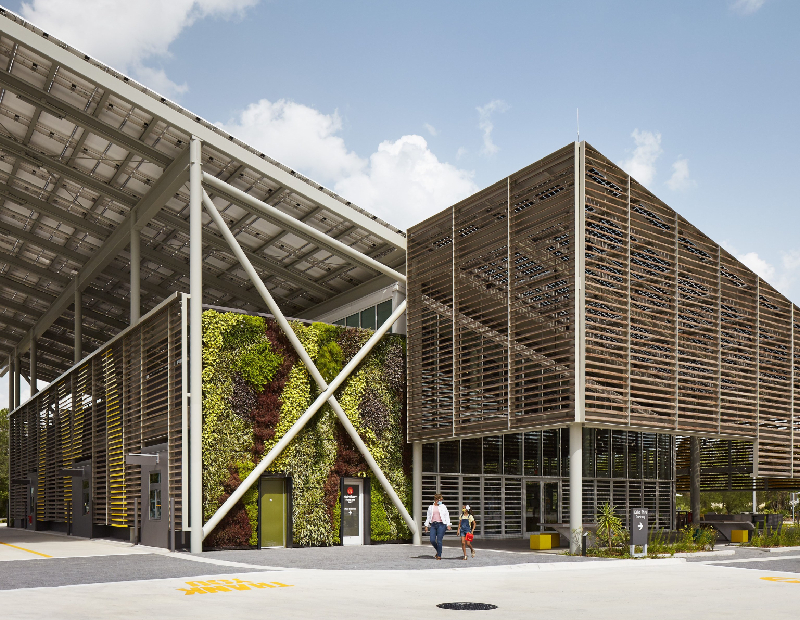McDonald’s Florida Net-Zero Energy Flagship
The restaurant will serve as a learning hub for the company’s attempts to reduce energy and water use.

McDonald’s Flagship in Orlando, Fla. Image courtesy of McDonald’s
The net-zero concept is gaining traction across the U.S. One of the most recent adopters of the trend is McDonald’s, which earlier this summer, announced it had completed construction of the first-of-its-kind quick-service restaurant designed to generate all the power it needs from renewable energy.
The flagship restaurant is located in Orlando, Fla., on the west side of Disney’s property on Buena Vista Drive, near the All-Stars Resorts. The facility creates enough on-site energy to fully cover its needs on a net annual basis and will serve as a learning hub for the company’s attempts to reduce energy and water use. Due to the COVID-19 pandemic, the facility is only open for drive-thru and delivery services.
The 8,024-square-foot restaurant features:
- A photovoltaic solar panel array with 1,066 solar panels able to generate 600,000 kilowatt-hours per year
- 1,500 square feet of photovoltaic glass panels integrated throughout the building able to generate nearly 70,000 kilowatt-hours per year
- More than 600 square feet of louver windows that open and close automatically, bringing cool air in and warm air out
- More than 1,700 square feet of green, plant-covered walls absorbing carbon dioxide, promoting biodiversity and retaining water
- Solar-powered poles placed in the parking lot offset more than 9,000 kilowatt-hours annually
- Low-flow plumbing fixtures, water draining pavers and native Florida plants reduce water usage and waste
- Stationary bikes used by customers to power the McDonald’s golden arch string lights
In the coming year, McDonald’s will pursue the International Living Future Institute’s Zero Energy Certification. The energy data from the restaurant will be used by McDonald’s to achieve its global sustainability goals, including sustained progress toward the company’s target to reduce greenhouse gas emissions by 36 percent in restaurants and offices by 2030 compared to 2015 as the base year.
READ ALSO: Net Zero as the New Standard
The flagship restaurant announcement comes after McDonald’s last year’s investment in two virtual power purchase agreements for 380 megawatts of solar and wind power. Once these begin commercial operation, they are estimated to produce enough energy to power more than 2,500 restaurants, while offsetting more than 700,000 metric tons of carbon dioxide emissions annually.







You must be logged in to post a comment.